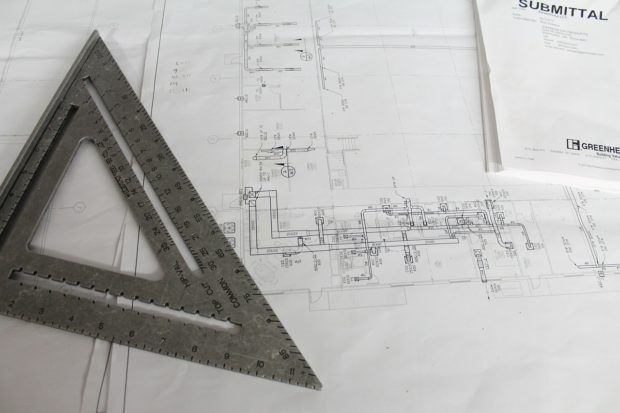So, it’s finally happening after years of looking and dreaming of the perfect place, you’ve finally gotten financial backing, and you are finally building the house of your dreams! You found a great architect, an amazing interior designer, are working with a construction contractor that you trust, and you even have a landscape architect to build your dream garden. You have the perfect combo to build that home that you’ve been wanting to own. But, hang on, maybe you should add RFIs to your list. Wait, what is RFI? And how can it help you build your dream house?
If you haven’t heard of RFI before, you are not alone. It’s seldom heard in a residential construction setting because it is often used in big commercial construction projects like skyscrapers, hotels, roads etc. RFI stands for Request for Information. If you live in the UK, it’s often called a Technical Query.
RFIs are an official request form often written by a contractor or subcontractor that requests for details during the entire lifespan of a construction project starting from the drawing down to the completion stages of a construction project. A contractor RFI is written with the purpose to close any information gaps and clarify any misinformation, but not limited to the following: design drawings, specifications, standards, and contracts.
In a nutshell, it’s a formal written communication for answers. But wait! If it’s just asking questions, wouldn’t it be just as effective as asking the people involved directly or perhaps giving them a phone call, or an email to get the answers? After all, you are building a house, and not a tall skyscraper. You can, in fact, that would be an ideal situation. But, most often phone calls, emails, and verbal field questions can go unanswered. And, in the end, if anything unpleasant happens, it would be a case of he said, she said between you and the contractor or whoever else was supposed to be in charge of fixing that particular problem. And believe me, it’s not going to be a pretty picture. RFIs are a way to make sure that whatever questions that may arise are answered by the person in charge in a timely manner.
Reasons Why RFIs Should Be Written
Now that your curiosity is piqued about RFI’s, let’s take a quick look at why you should start to think about writing RFIs when you are building your dream house.
- On any construction project, there will be countless questions and discussions that will result in answers, opinions, additional information, and clarification. The RFI is a document that will clearly and cleanly manage all the questions, concerns, etc. that you might have about the project.
- An RFI will make sure that the recipient of the RFI (architect, designer etc.) will likely take the questions or concerns seriously. Because once a question is put on paper with a due date, the recipient will feel a more formal response to answer. This makes sure that there will be no charade of who is blaming who and will stop the responsible people from sidestepping legitimate questions.
- A lot of times, the RFI will expose a lack of information, a missed coordination, or just a lack of proper communication needed to allow the project to proceed smoothly. If answered thoroughly, the RFI can start a proper formal documentation trail.
Elements That Are Included in an RFI
There is no particular format to an RFI because each contractor has their own style in writing one, but to give you an idea on how it looks like, the following are usually present in an RFI.
- Project Name. This section should include the formal name and the address of the project that’s found in the contract, purchase orders and subcontract.
- Your name or names as owners. Your name or names should be how it is written in the other formal documents of the project.
- Name of the architect as written on the contract
- Name of the engineers. These will include all the engineers ( site, civil, mechanical, electrical) that are involved in the project.
- The date when the RFI was written
- The question. An RFI should only include one question. If there are twenty questions, write twenty RFI’s. This allows the person who is supposed to answer it to focus on the issue.
- The date that the RFI was submitted to whomever the RFI addresses.
- Identification of the responsible parties that are addressed by the RFI. This could be just one person or a group of people who are supposed to answer the RFI
- A due date. It’s important to include a due date on the RFI to make sure that you get the response on time.
- The signature line as well as a formal line identifying the author of the response.
- Copied parties. You, as the homeowner should be cc’d with any RFI that was issued as well as any responsible party involved to make sure that they are formally notified of the RFI. It is essential that the owner, architect, engineers and any other responsible party be copied on the RFI to ensure that they are formally notified of the RFI.
RFIs in Action in The Real World
If at this point, RFIs seem a little vague, and you’re not really sure how it’s going to help you build your dream house smoothly, that’s ok. Let’s go a little deeper and see how RFIs answer questions and work in the real world. Here are some of the typical things that are reoccurring in most RFI’s.
- Layout and dimensional questions. There are some cases that the architect or engineers fail to close the structure. In engineer talk, this means that the structure’s dimensions (in this case your house) must add up to the total perimeter with all the proper angles to close the project. There are some projects that don’t close because the architect failed to coordinate with the structural engineer and the dimensions didn’t add up. This situation does not bode well to your dream house project.
- Lead issues and cost saving suggestions. If you have a set schedule on when you want your house to be finished, materials or products that are used in the project that needs a long lead time to order or manufacture may not fit the required schedule of the project. Also, if there is a budget issue, contractors will be able to suggest a more economical substitution to the materials. The RFI will allow the contractor to identify these issues and allow the contractors to suggest a solution.
- Design mistakes. Building something from the ground up is a complicated process, and involves a combination of design, engineering, and materials. Sometimes the project that was beautifully drawn up can have design flaws that can only be identified as the project is constructed. The RFI is the perfect way to clearly and accurately identify these mistakes and correct them.
At the end of all of these, an RFI can work to your advantage as a homeowner because it provides a more formal setting on answering any issues that might come up while constructing the house of your dreams. So while you are excited about the type of color that you’ll be painting your kitchen, or which tiles to use for the floors, it might also be a good time to discuss RFIs with your contractor. Because, if done right, RFIs can make sure that your dream house will be constructed without a hitch.














